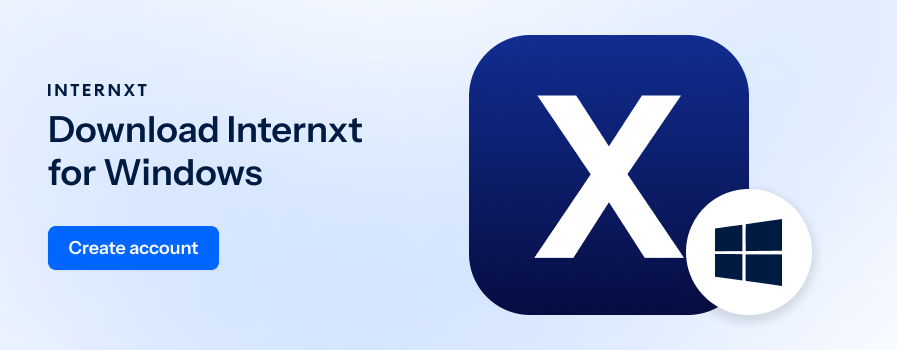Cloud Storage in Content Operations: Why It Matters and 6 Best Practices To Follow

When implementing your content strategy, you'll need to be intentional about the technology you choose to manage the digital assets you create, share, and store. From creation and storage to accessibility and sharing of your digital assets, using cloud storage for content operations has a few rules you need to follow.
By focusing on best practices, you'll leverage technology, a key component of content operations, to help you improve the effectiveness of the content you use to deliver better buying experiences.
Not knowing these best practices might mean storing your content in place it may be at risk, data can be compromised, or you may end up with a disorganized storage system that gets in the way of your existing content production process.
Whether you're looking to use cloud storage for your content operations or you've been using the cloud for content operations for a while now, this article has several tips to help you make the most of your cloud storage and improve your overall content operations.
We'll walk you through all the benefits of the cloud in content operations and then talk about six best practices that will help you move beyond just storing content to using cloud storage sustainably to boost your content operations.
What Are Content Operations?
Content operations are all the activities that support the implementation and success of your content marketing strategy.
Content operations ensure that your content aligns with business priorities by providing the people involved with the processes and brand activation technology they need to help collaborate seamlessly in implementing your content strategy.
In short, content operations make sure that you publish quality content efficiently. They also assist in identifying the ideal assets for converting clients and help you deploy them on time to prospects and leads at different stages of the buying journey.
Why Is Storing Data on the Cloud Important for Content Operations?
In a content operations context, cloud storage is a service that allows you to store your digital assets in an offsite location and access them via a private network or public internet.
Its intended purpose is focused on user access and security, different from digital asset management, where assets are designed to be accessible to everyone in the organization.
Here's what you stand to gain when you integrate cloud storage into your content operations:
Scalability
Using physical hard drives and servers to store your assets is unscalable. The amount of data you can keep is limited to the size of the hard drive. Besides, continued investment in hard drives and servers with more extensive physical space requirements means more expenses in operating your storage needs.
With cloud storage, however, you're not limited to the amount of storage space available or handling the cost of running and maintaining servers that store your data.
You can quickly scale up or down depending on the number of digital assets you create as dictated by your content calendar so that you only pay for the amount of storage space you use.
You also don't need to worry about handling the infrastructure or the costs that come with it. All you focus on is organizing your data.
The cloud storage provider secures, manages, and maintains the servers that hold your data and are responsible for all other related infrastructure. They also make sure that you can access your digital assets whenever you need them.
Usability and accessibility
Most cloud storage service providers have an intuitive user interface, allowing you to drag and drop assets from your device into the cloud. They also allow you to organize and retrieve your assets without much hassle on different devices, as long as you have a stable internet connection.
To access your assets, you must connect to the cloud using the internet or through a dedicated private connection, web portal, website, or mobile app. Once you synchronize your cloud with your device, you will be allowed open access to your assets on any devices using a mobile or web app that is linked to your account.
You can also share your assets with different users like teammates or coworkers to improve collaboration. This is invaluable if you're managing a remote team.

Version control and security
In addition to accessibility, cloud services allow you to share your assets safely and securely.
With cloud services, you can limit permissions, determine levels of access, and dictate how different users can modify a particular asset. You can also control different versions of the same asset; for example, assets you've created using AI tools such as content creation templates for easy identification.
Having your digital assets organized in one place helps you avoid duplicating content efforts. No more creating the same piece of content more than once because you can't find a previous version. This also prevents limited usage of content assets because, with the correct versions in place, you can efficiently deploy the proper materials to the right people at the right time.
Best Practices for Your Content in Cloud Storage
Best practices are designed to help you stay compliant with existing regulations, protect your digital assets, and allow access whenever you need them. Here are six best practices you need to pay attention to when using cloud storage:
Naming and organizing
The way you name and organize your digital assets in the cloud should make it easy for you and other team members to find these assets whenever they need them. If you've decided to use cloud storage to expand the amount of storage space available, there's no need to change your current naming system if it hasn't been a problem before.
If you've had prior issues where you had to create a new asset because you couldn't locate an older asset, consider reviewing your organization’s standard operating procedures and the naming conventions you're using.
The names you use should be easy to understand and easy to find by both remote and on-site employees.
Backup and disaster recovery
While most cloud service providers have redundant servers to protect your assets from loss or being compromised, you should also have your own backup and disaster recovery plans.
In addition to using a reputable and secure cloud storage provider, you may opt to have more than one cloud service provider storing your data to avoid being locked in by iron-clad contracts and dependent on one service provider.
Your assets will grow over time, and it may be necessary to have more than a single provider so you can entertain options in case any issues occur that would affect the security and accessibility of your assets.
Store your most important data and files in the cloud, and only keep a local backup as a redundancy measure. For example, suppose your cloud service provider has an outage or is conducting maintenance on their servers and you can't access your data. In that case, you can always access your assets from a different service provider or your local backup to avoid interrupting your workflows.
Deletion and data removal
As a data owner, you need to have a data retention policy to help determine the duration of your data storage. You also want to be aware of how your cloud service provider will delete your data and the timeframe within which they will do it.
Once you have a policy in place, include it in the sales level agreement to ensure that it is implemented in case you choose to switch providers and to avoid vendor lock-in. Worrying about your data's safety when you've already moved on to a new provider is not fun.
Compliance
Regulated industries have a lot of sensitive information about their clients and must protect this data.
As such, they may need to use managed service providers (MSPs) to maintain their data infrastructure and invest in private clouds to maintain the security of industry data.
Private clouds protect you from service interruptions like outages, meaning you have access to your data assets whenever you need them.
Another thing to remember is that your cloud storage service provider needs to demonstrate, both in word and deed, that they prioritize cybersecurity and enforce data protection regulations in an effort seal any loopholes that would lead to data theft.
Security
Use encryption for all sensitive data stored in the cloud and regularly review your security and access settings. In practice, that means deciding what data to store in the cloud and what to keep on physical hard drives.
Also, avoid moving all your assets to the cloud too fast without understanding how the service works and how you can encrypt sensitive data stored in the cloud.
Create an implementation schedule, and don't move all your data simultaneously. You want to make sure that migrating to the cloud helps you improve your workflow and reach higher milestones.
You also want to make sure you're aware of the amount of storage you intend to use, how often the service backs up your data, and how secure the transfer process is to better ensure digital safety.
Access control
While migrating to the cloud, you want to ensure your remote workers are considered and they can access the cloud while still having confidence in the safety of your assets.
Register specific devices and activate two-factor verification for every login so your remote team has secure access to your information in the cloud. Also, make sure everyone is on the same page and understands the rules of your remote work company policies around cybersecurity and access.
If you're storing critical information related to your content operations process on the cloud, determine different levels of access, such as administrators, users, and guests, and what they can do (and not do) with your digital assets.

Conclusion
In content operations, cloud storage should be a force multiplier, as opposed to being another hurdle to overcome in implementing your content strategy.
However, while offering a promise to make your work easier managing your digital asset management tool, cloud storage also requires you to follow some rules to keep your assets secure and accessible to relevant stakeholders.
By following the best practices we've discussed above, you will set yourself (and your team) up for future success by ensuring that you've covered your bases and that your data is safe, secure, and accessible for all your content workflows.
And if you're looking for a cloud storage service provider that will make it easier to implement these best practices, sign up for Internxt to experience their user-first philosophy and unwavering commitment to keeping your data safe.

